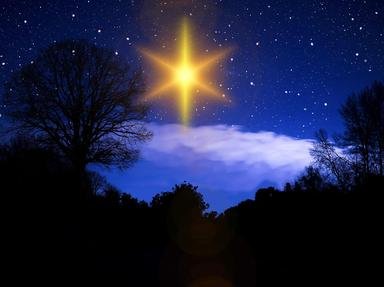Quiz Answer Key and Fun Facts
1. genealogy of Jesus from Abraham
2. the Annunciation
3. Zechariah is struck dumb for doubting Gabriel's message
4. Mary visits Elizabeth
5. Joseph told to name the child Jesus
6. Joseph and Mary travel to Bethlehem
7. Mary rode a donkey traveling to Bethlehem
8. Jesus was born on December 25
9. Jesus was born in a cave
10. shepherds worshipped Jesus at his birth
11. animals of the stable worshiped Jesus in the manger
12. Magi visited Jesus in a house
13. there were three wise men
14. Jesus was officially named eight days after birth
15. flight to Egypt
Source: Author
looney_tunes
This quiz was reviewed by FunTrivia editor
agony before going online.
Any errors found in FunTrivia content are routinely corrected through our feedback system.
